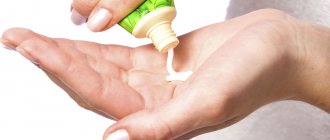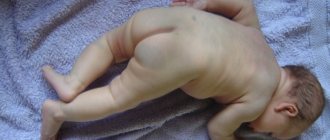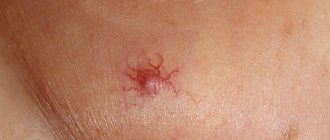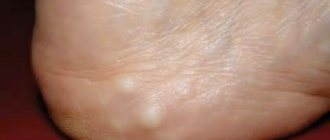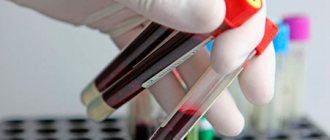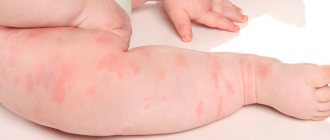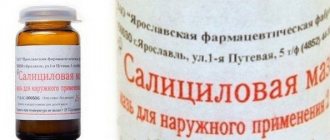Red Spot In Women's Groin Doesn't Itchy And Doesn't Hurt
Red spots in the groin in women, as a rule, appear as a result of damage to the skin by fungal or bacterial infections. Foci of inflammation are localized around the groin, in skin folds, and places of friction with clothing. Favorable conditions for the development of an inflammatory skin reaction are:
- insufficient flow of fresh air to the skin;
- excessive sweating and sebum secretion;
- overheat;
- mechanical damage to the epithelium, etc.
A large number of pathogenic microorganisms accumulate daily on the surface of the skin, which, under the influence of favorable factors (allergic reactions, mechanical influences), activate their activity, which, with a decrease in immune defense, leads to dermatitis of various etiologies.
As a rule, red spots near the groin appear in the warm season, when the sebaceous and sweat glands are especially active. Moist skin becomes a fertile condition for the proliferation of pathogenic microflora.
Treatment for red spots in the groin area will depend on the causative agent of the disease. In some cases, only local treatment is sufficient, while in others, complex therapy is required.
Diaper rash appears as large red spots, localized in the folds of skin around the groin. Typical symptoms of diaper rash are:
- itchy spots in the groin, often with papular formations;
- painful sensations upon contact with water;
- hyperemia of inflamed areas of the epithelium;
- increased body temperature in areas of inflammation;
- excessive moisture/dryness of the skin.
If not treated in a timely manner, the round red spot can spread to nearby healthy tissue, thereby increasing the area of skin damage. Deep tissue infection leads to ulcerative growths, which prevents skin healing. Pink spots in the groin area stop scarring and become covered with bleeding microcracks.
To eliminate diaper rash in the early stages, a furatsilin solution is used, after which the areas of inflammation are treated with talcum powder or zinc ointment. Ultraviolet irradiation of the affected areas also has a beneficial effect on the condition of the skin.
Athlete's foot
The disease has a fungal etiology of an infectious nature. Damage to the skin occurs upon contact with the causative agent of the disease through general hygiene products, underwear, direct contact, clothing, etc. Symptoms of the disease:
- red spots itch and peel;
- the pale center of the spot, bordered by a hyperimilated rim, is clearly visible;
- often the spots merge into extensive plaques;
- When papular rashes occur, the spots begin to ooze clear or cloudy liquid.
The development of the disease affects the general condition of the body, affecting the nail plates and hair. Treatment of the disease involves the local use of antifungal agents (ointments, lotions, compresses). During an exacerbation period or a large affected area, complex therapy with a course of antibiotics is possible.
Erythrasma has a bacterial etiology, for which it is often classified as pseudomycosis. Inflammation occurs as a result of weakening of the body's immune defense, and the causative agent of the disease, as a rule, is always present on human skin.
Often, erythrasma occurs in a chronic form, appearing only during an exacerbation as red rashes. As a rule, red spots in the groin are painless, clearly demarcated from unaffected skin, and may be covered with small scaly cells.
If a secondary infection occurs, itching and pain may appear in the groin area.
To treat the disease, local exfoliating and antiseptic agents (sulfur-tar, erythromycin ointment) are used. If the affected area is large, a course of antibiotics is prescribed.
Treatment for red spots in the groin area will depend on the causative agent of the disease. In some cases, only local treatment is sufficient, while in others, complex therapy is required.
Why do red spots appear in the groin in men and women?
If a woman or man has red spots in the groin, then first of all you should rule out an allergic reaction, then take a closer look at fungal diseases and only at the very end think about venereological diseases.
According to statistics, every person at least once in his life has encountered the appearance of red spots on the skin, which were accompanied by additional symptoms.
Based on the accompanying symptoms, examination of the clinical picture and microscopic examination of scrapings from the lesions, it is possible to establish the disease that provoked the appearance of red spots in the groin area.
Possible diseases
Many people immediately get scared and begin to imagine a bunch of terrible pathologies when they discover red spots in the groin. According to statistics, most often the problem lies in the following diseases:
- Erythrasma. Common pseudomycosis caused by corynebacteria. It mainly affects the groin area, inner thighs, armpits and, less commonly, the mammary glands. The risk of infection after physical contact with a sick person is small, since the development of erythrasma requires favorable conditions - poor personal hygiene, increased sweating. Patients do not complain of pain, symptoms of itching are minimal. A distinctive feature is brown and red spots in the groin, between the legs and the perianal area. The surface of the rash is smooth; during the process, mealy peeling may appear.
- Athlete's foot. A fungal disease that often occurs in men and women aged 20-45 years. It is considered highly contagious, as infection can occur even through a thermometer, socks or towel. Most often, athlete's foot becomes infected in public places (baths, saunas, swimming pools, showers, etc.) and through close bodily contact with a sick person. The initial stage is characterized by the appearance of one or several red spots in the inguinal-femoral area. Color can vary from orange to dark brown. The shape is round, the size from a small coin to a matchbox. As the process progresses, the lesions merge with each other, their surface begins to peel off. They are usually localized in the groin area, on the inner thighs, scrotum and perianal area. Unlike erythrasma, there is severe itching, in some cases leading to extensive scratching and secondary infection.
- Contact irritant dermatitis. It is more common in women who regularly undergo hair removal procedures in the intimate area. Along with red spots in the groin, irritation, swelling and blisters may appear. An allergic reaction can be caused by a razor or a product that was used to treat the skin after the removal procedure. Additional symptoms may include burning and severe itching. In men, allergies in the groin and genital areas are usually caused by personal hygiene products, synthetic underwear, condoms and lubricants.
- Psoriasis. A widely known dermatosis of hereditary nature. It occurs equally often in women and men. Plaques can affect the scalp, elbows, knees, back, abdomen and inguinal-femoral part of the body. At the initial stage, a small red or pink spot appears, which increases in size over time. The surface is covered with white scales, which are easily removed when touched. Also, the appearance of plaques greatly depends on the form and stage of psoriasis.
- Rubromycosis. Another fungal disease that looks very similar to athlete's foot. The same large red spots in the inguinal-femoral folds, between the legs and buttocks. Only here the process also involves vellus hair, which is “entwined” with spores of the pathogen fungus. As a result, the hair loses its shine, looks dull and can break off at the slightest touch. In some cases, the affected area occupies large areas of the skin and patients experience excruciating itching.
- Lichen planus. According to statistics, 1.5% of all skin diseases are lichen planus, which occurs more often in women aged 35-60 years. At the initial stage, it may appear in the form of red-lilac spots with a diameter of 2-4 mm. As the process progresses, the rashes merge, forming rings and garlands of red-lilac papules. The rash is localized in 25-65% of cases in the groin and genital area, less often on the mucous membranes of the mouth. The course is long-term, chronic and can last for years without adequate treatment. Patients complain of severe itching.
Candidiasis also cannot be ruled out, which in addition to the genitals can affect large folds. But it has characteristic differences in the form of weeping and a whitish coating on the surface of the lesions.
Diagnosis and treatment
Important! There is only one case where you can not seek help from a doctor if red spots appear in the groin - their allergic origin. With contact dermatitis, the inflammatory process usually subsides within a few hours/days. All other situations are subject to a thorough examination by a dermatovenerologist.
Fungal infections (epidermomycosis, rubromycosis, erythrasma and candidiasis) are diagnosed based on a detailed study of symptoms, laboratory examination and glow of the lesions under the rays of a Wood's lamp.
After identifying the pathogen, external agents are prescribed that are effective at the initial stage. In case of recurrent course, systemic therapy can be used.
The list of antifungal drugs for erythrasma, athlete's foot, rubrophytosis and candidiasis usually looks like this:
- Clotrimazole (prescribed most often, as it is cheap, and the effect at the initial stage is amazing);
- Mycoseptin;
- Lamisil;
- Nizoral;
- Pimafucin;
- Triderm;
- Pimafukort.
Source: https://clearderma.ru/gerpes/krasnoe-pyatno-v-pahu-u-zhenshhin-ne-cheshetsya-i-ne-bolit
Why do red spots appear in the groin of women and men?
Red spots in the groin are a common cause of concern for men and women. Typically, the inflamed areas of the skin are itchy, itchy and painful. Their appearance is explained by a whole range of possible reasons - from insufficient hygiene to systemic pathologies of the body.
Causes of redness in the groin in men
Red spots in the groin in men are most often caused by pathologies such as:
- athlete's foot inguinal;
- erythrasma.
The risk group includes young and middle-aged people suffering from excess body weight and hyperhidrosis, as well as those who, due to their profession, spend a long time in hot conditions.
Erythrasma
This is a superficial pseudomycosis of bacterial origin. The causative agent of erythrasma is Corynebacterium minutissimum, a representative of opportunistic flora, which is normally present in small quantities on the skin.
When immunity is lowered, the activity of the pathogen increases, which leads to the appearance of brownish or brick-colored lesions in the groin area, armpits, abdomen and around the anus.
Causes of redness in the groin in women
Red spots in the groin in women are often a manifestation of:
- candidiasis (thrush);
- allergies;
- hormonal dysfunctions.
Candidiasis
This is the name for an infectious pathology that occurs due to the excessive activity of opportunistic fungi of the genus Candida.
Affecting the mucous membranes of the genital organs, the infection eventually spreads to the skin of the inguinal folds. Itchy pink spots with signs of peeling appear.
Allergy
It can be a reaction to the composition of sanitary pads, underwear, intimate hygiene products, condoms and lubricants. The skin becomes covered with red spots, which may have a flaky surface. Among other things, this is one of the manifestations of such an immune pathology as atopic dermatitis.
Its debut, as a rule, occurs in childhood, and in adults it is already in a chronic form. In the acute period, the disease manifests itself as itchy, hyperemic rashes all over the body, including in the groin area. Atopic dermatitis is not contagious and therefore is not transmitted through tactile contact.
Hormonal dysfunctions
One of the features of female physiology is frequent changes in hormonal levels. During pregnancy and menopause, this may be accompanied by the appearance of pigmented dark spots in the groin, red and brown in color.
When hormonal imbalance is caused by diseases of the internal secretion organs, this can also affect the condition of the dermis. For example, with diabetes, the skin becomes red, itchy and itchy. And not only in the genital area, but also on the knees and in the abdominal area.
Other causes of redness
It is worth saying that all the reasons mentioned above are not clearly divided by gender, but some of them are more typical for men, and others for women.
In addition to those listed, there are a number of conditions that can cause redness and discomfort in the groin:
- Insufficient hygiene. To keep your body clean, you need to wash with soap twice a day, and more often in the hot season. Failure to follow the rules of personal care leads to the fact that natural secretions accumulate on the skin, irritating it;
- Hyperhidrosis. When the sweat glands work intensively, the surface of the body remains wet for a long time. The secretion contains salts that have an irritating effect, especially in the folds of skin under the arms and in the groin area. The epidermis in these places becomes red and inflamed. Because a person constantly sweats, hyperemic spots appear, which tend to increase in size over time. In the absence of therapeutic measures, an infection may develop, which will lead to the appearance of weeping wounds and ulcers.
- Shaving the intimate area. Despite the fact that there are more gentle methods of hair removal, many continue to do it with a razor. As a result, the top layer of skin is damaged, and when bacteria, viruses and fungi get into microcracks, foci of inflammation develop.
- Pubic lice, scabies and helminthiasis. The presence of insects and parasitic worms in the body causes significant harm to the body and is accompanied by characteristic symptoms. These include redness and discomfort in the groin area. Without treatment, helminthic infestations in women lead to intestinal worms penetrating from the anus into the vagina. Areas of inflammation appear between the legs and in the perianal area, which are very itchy, especially at night.
- Sexually transmitted diseases. This is a large group of pathologies that cause the appearance of red spots in the groin. In some cases, skin problems are caused by the presence of mucous secretions on its surface containing a pathogenic infection, in others - by the peculiarities of the development and course of the pathology. For example, a few months after infection with syphilis, specific red rashes appear on the body - syphilides. It is noteworthy that they do not cause itching.
It is difficult to independently determine the cause of the appearance of spots in the groin. This requires special diagnostics, which can only be prescribed by a doctor. He will also determine how to treat it.
Depending on the type of pathology, a gynecologist, dermatovenerologist, endocrinologist and other medical specialists can treat spots in the perineum. However, you can start with a visit to a dermatologist.
Principles of treating red spots in the groin
After studying the examination results, the doctor makes a diagnosis and prescribes treatment, which always depends on the cause of the pathology, for example:
- Infectious skin lesions are removed with creams, ointments and other topical compositions, which are selected taking into account the sensitivity of the pathogen to them. In some cases, oral medications are indicated;
- Allergic spots in the groin usually go away when the irritant is eliminated. To quickly relieve symptoms, the doctor prescribes antihistamines for internal and external action;
- spots that appear as a result of a lack or excess of hormones disappear when their levels are restored to normal. In the case of endocrine pathologies, the condition of the skin in the groin can be improved by focusing on treating the underlying disease.
Conclusion
So, foci of inflammation in the perineum appear for various reasons. If red spots appear in the groin and itch, you should not expect that the problem will go away on its own, since in most cases this does not happen.
A long absence of treatment can aggravate the situation and lead to the development of complications. To prevent this from happening, you should consult a doctor at the first signs of ill health.
Source: https://dermatologiya.com/problemy-18/krasnyie-pyatna-v-pahu-u-zhenshhin-i-muzhchin/
How to treat at home - what ointments and creams will help with itching of the scrotum?
At home, itching of the scrotum can be treated only after undergoing an examination by a dermatologist in order to know what kind of disease is being treated and what medications are advisable to use in a particular case. Most often, to stop the skin on the scrotum from itching, dermatologists prescribe the following ointments and creams for external use.
Menthol based
The main drugs for eliminating itching of the scrotum include menthol-based drugs:
Boromenthol;
- Bom-benge;
- Golden star (cream-balm);
- Menthol oil.
Menthol-based medications should not be used by men whose itching is caused by irritation with a violation of the integrity of the skin of the scrotum (deep scratches, wounds, ulcers).
Panthenol
A complex drug that relieves itching, swelling and inflammation of epithelial tissue in the testicular area. The ointment also promotes faster healing of irritated skin.
Nezulin
It has antiseptic properties and consists entirely of natural ingredients. Perfect for men with sensitive skin in the intimate area, which is prone to frequent allergic reactions.
Gistan
An ointment containing a substance such as betulin. It relieves the feeling of itching, swelling and inflammation of the epithelial surface of the groin area in the shortest possible period of time.
Triderm
This type of ointment can rightfully be called a universal remedy for itching of any nature. The medication effectively resists infectious, viral and fungal microorganisms, the presence of which was the reason why the man’s testicles began to itch.
All types of these ointments can be used at home by applying them to the surface of the scrotum 2 times a day. The duration of therapy depends on the type of disease and the manufacturer's recommendations, shown in the manufacturer's instructions.
News MirTesen
Spots in the groin in women: photos, possible diseases, diagnosis, treatment
Spots in the groin area in women at least indicate that it is necessary to reconsider the features of caring for the intimate area. At worst, it is a sign of pathology. It is necessary to understand the reasons for the appearance of unusual pigmentation in order to choose the right ways to solve the problem.
Main reasons
In some cases, you can get rid of the defect yourself. But you shouldn’t delay this. Over time, an aesthetic defect can develop into a dangerous disease.
Hygiene features
In this matter, too much is just as bad as too little. With frequent water procedures using detergents, the skin dries, thickens and peels in places. And if you wash yourself rarely, sweat, dirt and rapidly multiplying microflora eat away at the epidermis, leaving stains on it. To avoid the problem, you need to wash twice a day, preferably without using soap or gels.
Irritation
Red spots in a woman's groin may appear after shaving or when rubbing with tight underwear and clothing. The problem is easily solved by properly preparing the skin for hair removal. It must be softened and moistened, and the tool must be clean and sharp. Panties, tights and other items of clothing should be chosen in a suitable size and without rough seams.
Intertrigo
During the hot season and after physical activity, sweat accumulates in the groin folds. The problem is aggravated when wearing synthetic underwear, which interferes with the evaporation of moisture. In obese women this situation occurs all the time. The skin becomes wet, dry and inflamed.
Swollen red spots appear on it. Watery blisters and itching may occur. When friction occurs, pain occurs. Talc, baby powder and other drying agents are used for treatment.
To prevent the problem from returning, you should wash off the sweat in a timely manner, wear underwear made from natural fabrics, and monitor your weight.
Photo
Viruses, fungi, bacteria and parasites leave rashes on the skin. Unusual pigmentation in the groin, caused by pathogens, requires qualified medical care.
Pediculosis
Dark spots in the groin in women can be caused by pubic lice. Parasites are most often transmitted from person to person through close physical contact. The disease affects people with hair in the groin area. Insects do not live on smooth skin.
Their bites leave burgundy, blue or purple bruises on the body. The saliva and excrement of lice cause severe itching and irritation. Discomfort increases after water procedures. Parasites can often be seen with the naked eye. They get rid of them using special insecticides.
But it is best to completely remove vegetation in the intimate area.
Rubromycosis
Pathology caused by pathogenic fungi. Mainly affects the skin of the feet and large folds. Sometimes vellus and long hair are involved in the process. The affected areas dry out and turn red. Skin grooves clearly appear on them. Severe peeling is noted.
The spots have uneven edges and are framed along the contour by an intermittent ridge. Growing lesions form semi-arcs, arches, rings and garlands. The treatment is long-term.
Includes the use of topical soothing agents, keratolytics for exfoliation, antifungal ointments and tablets.
Genital herpes
A viral disease that affects the skin and mucous membranes around the external genitalia. The pathology is characterized by severe itching and the formation of watery blisters. When scratched, the pimples easily burst, leaving ulcers in their place.
After the erosions heal, pink spots form. At the same time, the temperature rises, general weakness occurs, and the inguinal lymph nodes may become enlarged.
Therapy consists of the use of local and systemic antiviral drugs and external antiseptic treatment.
Spots in the groin in women can be caused by various reasons. It is not always possible to independently understand what causes the appearance of unusual pigmentation. It is better not to self-medicate, but to consult a dermatologist. He will prescribe adequate therapy, which will help avoid complications and other unpleasant consequences.
Source: https://uginekologa.com/pyatna-v-pahu-u-zhenshhin.html
Red spots in the groin in women: possible causes and treatments
In this article we will look at the reasons why red spots appear in the groin and itch.
In some cases, women experience discomfort in the groin area, which is a source of constant discomfort, increased irritability and spoiled mood.
The appearance of any changes in the skin in the intimate area should raise suspicion, because in most cases, redness may indicate the beginning of the development of a pathological process.
Women ignore such manifestations quite rarely, because they always strive for perfection and take care of their appearance.
However, it should be understood that rash and hyperemia are not only cosmetic defects, but also serve as a signal that it is necessary to visit a dermatovenerologist.
Reasons for appearance
Internal and external factors can provoke the appearance of red spots in the groin in women.
In cases where the color of the skin changes under the influence of environmental factors, correcting the changes is quite simple.
However, if redness is caused by a pathology developing in the body, then an integrated approach will be required, which involves therapy using special medications.
The most common external factors that provoke the development of spots and pimples in the groin in women are the following.
Depilation
Many modern women prefer to remove hair in the groin using wax, cream, machine or other depilation methods.
If you remove hair in a hurry or with mistakes, redness and irritation may appear in the groin. Such conditions are accompanied by burning and itching. As a result, ingrown hairs can occur.
To avoid such a situation, it is recommended to use only high-quality products for depilation.
In addition, it is important to pay more attention to the skin before depilation: before hair removal, it is advisable to scrub, which will remove dead epithelial cells. In this case, sugaring or shaving will be of better quality. After the depilation procedure, you should not neglect the use of a special sedative.
Hyperhidrosis
Hyperhidrosis is commonly understood as increased sweat production. As a result, maceration of the epidermis begins in the groin area, acidity changes, and the pH becomes alkaline.
These factors contribute to the addition of a pyococcal infection or fungus. The main symptoms are the development of redness and excessive hydration of the skin.
Hyperhidrosis occurs as a result of pathological processes in the thyroid gland, obesity, and disorders in the central nervous system.
Limited neurodermatitis
This pathology is localized in the femoral-inguinal folds, on the inner side of the thighs, in close proximity to the external genitalia. The main symptom is itching.
Lichenification, peeling, and papular elements appear in the lesions.
This disease develops against the background of neuroendocrine disorders, hereditary predisposition, dysfunction of the liver, gastrointestinal tract, and functional disorders of the central nervous system.
Pediculosis pubis
Red spots in the groin in women may indicate lice pubis. This disease develops as a result of the parasitic activity of pubic lice. The leading symptom of infection is excessive itching, which intensifies at night.
The skin in the groin with lice pubis turns red as a result of constant scratching. In addition to the groin area, pubic lice can spread to the armpits and perianal area. The disease has another characteristic sign - a spotted rash appears, which tends to disappear quickly.
Quite often, women independently discover parasites and their eggs on their pubic hair. In some women, the symptoms of lice pubis are accompanied by an allergy to parasitic waste products.
The danger is represented by the consequences that can develop when an infection enters the body through scratched skin.
Lichen planus
It is a small red rash (their diameter does not reach more than 4 mm), which is localized in the groin area. If there is no timely treatment, the rashes begin to merge into “garlands” of red papules, which are very itchy. Therapy for lichen ruber will be effective if antihistamines, corticosteroids, and sedatives are used in combination.
If redness and itching in the groin in women is observed, it is important to immediately seek help from a medical professional. It is he who will be able to determine the cause of the violations. If the disease develops as a result of improper genital hygiene, the doctor will give professional advice on how to correct the situation.
In some cases, it may require scraping from the affected area for the purpose of subsequent laboratory examination and determination of the causative agent of the disease.
You will probably need to use local treatment (tar, naphthalan ointment).
In other cases, complex therapy should be carried out using antihistamines, antibacterial agents, antibiotics, and antifungal medications.
Triderm ointment is very effective. Its price is quite reasonable.
The medication treats dermatoses, complicated infections that are caused by pathogens sensitive to the drug, it is effective for simple and allergic dermatitis, atopic dermatitis (including diffuse neurodermatitis), limited neurodermatitis, eczema, dermatomycosis (dermatophytosis, candidiasis, lichen versicolor); also relieves simple chronic lichen.
"Triderm" is applied to the affected areas of the skin, lightly rubbed in, twice a day. The duration of therapy is determined individually. If clinical improvement has not occurred after a month from the start of treatment, then it is worth clarifying the diagnosis. The price of "Triderma" is 640 - 650 rubles per package.
It is important to remember that treatment will only be effective if the cause of the disease is correctly identified.
Source: https://FB.ru/article/391526/krasnyie-pyatna-v-pahu-u-jenschin-vozmojnyie-prichinyi-i-sposobyi-lecheniya
Which doctor should I consult if my balls and under them are very itchy?
If a man suddenly feels the development of severe itching in the scrotum area, which does not stop for several days, but only intensifies in its manifestation, then it is necessary to undergo examination by a dermatologist. A specialist of this profile will examine the genital organs and the skin surface of the intimate area. If there is a suspicion that a man has a particular disease, the doctor prescribes a biochemical test of blood and urine, and also takes smears from the epithelial surface of the scrotum and other areas of the groin area.
READ ALSO: Itchy elbows: causes and treatment of itching, rash, redness
After this, a bacterial study of the taken biological material is carried out to establish the true cause of the pathological symptom, as a result of which the testicles and the skin located under them began to itch. The formation of a therapeutic course, the selection of medications for external treatment of the scrotum and drugs produced in other pharmacological forms (intramuscular injections, tablets) depend on the results of laboratory tests.
Red spots in the groin in women: photos, causes, treatment
As a rule, red spots in the groin in women occur due to exposure to external and internal irritating factors on the skin. Infection with fungi or pathogenic bacteria, allergic reactions, non-compliance with the rules of caring for the skin of the intimate area - there can be many reasons for the appearance of an unusual skin reaction.
Unfortunately, many girls prefer to ignore the problem at the initial stage, not attaching much importance to small spots at first. As the process progresses, their size, color and subjective sensations may change.
Symptoms can be complicated by the appearance of a rash in the groin area, terrible itching and peeling in the perineum.
To protect yourself and others from possible infections and avoid complications, you must seek medical help in a timely manner.
Every day, many pathogenic microorganisms accumulate on the surface of the skin. Under the influence of mechanical irritants, internal imbalance of immune defense and the presence of a favorable environment for reproduction, pathogenic microflora penetrates the body, provoking the development of dermatoses of various etiologies.
Diaper rash
Large red spots in the groin area in women appear due to contact of the skin, irritation from sebaceous secretions and sweat, poor ventilation and overheating of the skin. Diaper rash is a non-infectious source of inflammation and can be easily treated with ultraviolet radiation and external anti-inflammatory bactericidal drugs.
To get rid of an unpleasant illness, it is necessary to replace synthetic underwear with high-quality analogues made from natural fabrics, stop using cosmetics with fragrances, take care of a constant flow of air to the skin and strictly adhere to the rules of personal hygiene. Untimely treatment is fraught with deep infection of the skin and the appearance of ulcerative tumors.
A fairly common fungal disease that mainly affects the area of large folds. There may be the appearance of small bright red spots in the groin area, which over time increase in size and become covered with a white coating.
If a secondary infection occurs, an unpleasant odor and terrible itching may be added. Exacerbations occur most often in the summer. Overweight women who engage in sedentary work are at risk. Treatment is carried out using antifungal ointments.
Allergic reaction
Skin irritation, accompanied by the appearance of red spots in the groin in women, can be caused by exposure to external irritants - low-quality depilatory devices, perfumed cleansing and caring cosmetics, synthetic underwear fabrics, condom lubricants, the surface of sanitary pads, etc. In addition to red rashes, swelling, a noticeable burning sensation, itching and peeling of the skin in the groin area are also often observed.
To effectively treat an allergic reaction, it is enough to eliminate the impact of the irritant and support the body with antihistamines and vitamin-mineral medications. In almost all cases, symptoms disappear within the first 2-3 hours; in case of severe burns, after a few days.
General rules of treatment
After diagnosis, the doctor will recommend effective medications. Try to eliminate the cause that caused the proliferation of fungus in the groin area in men.
Helpful Tips:
- pay special attention to the hygiene of the affected areas and maintaining normal temperature conditions;
- if it is impossible to influence the causes (working conditions, climate), carry out water procedures more often, dust the groin folds with powder with zinc oxide;
- choose spacious underwear made from natural fabrics. This way the genital areas will sweat less;
- for hyperhidrosis (excessive sweating), wipe the folds of the skin with a decoction of oak bark, infusion of chamomile or sage.

